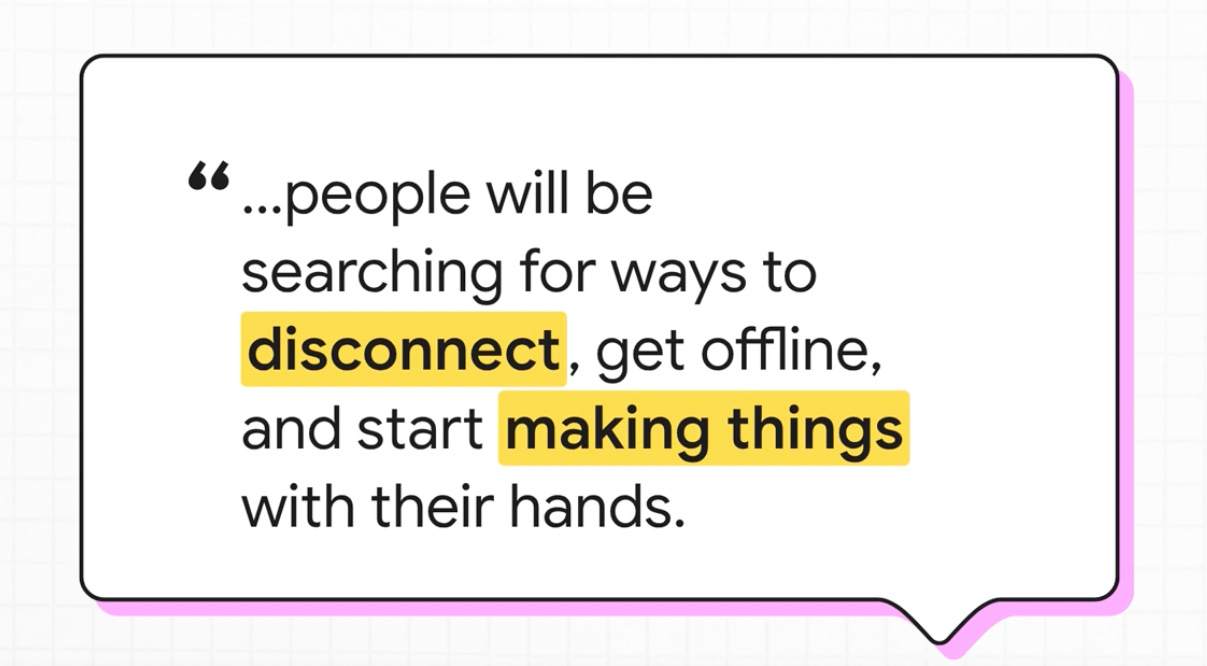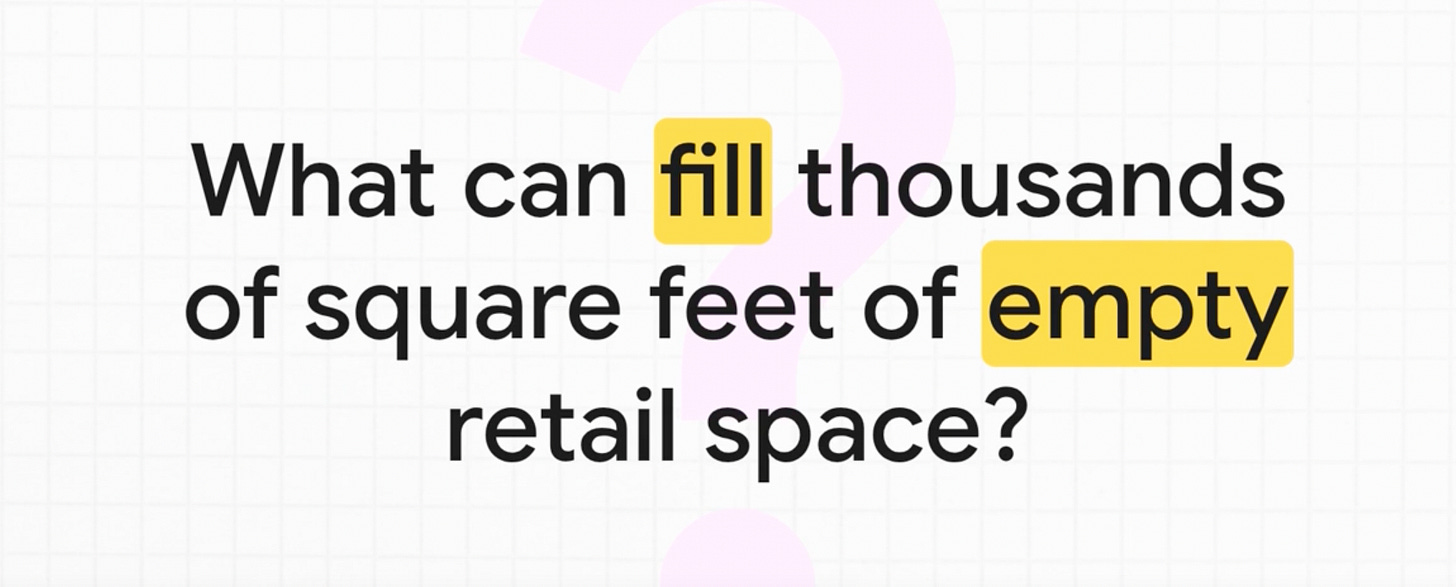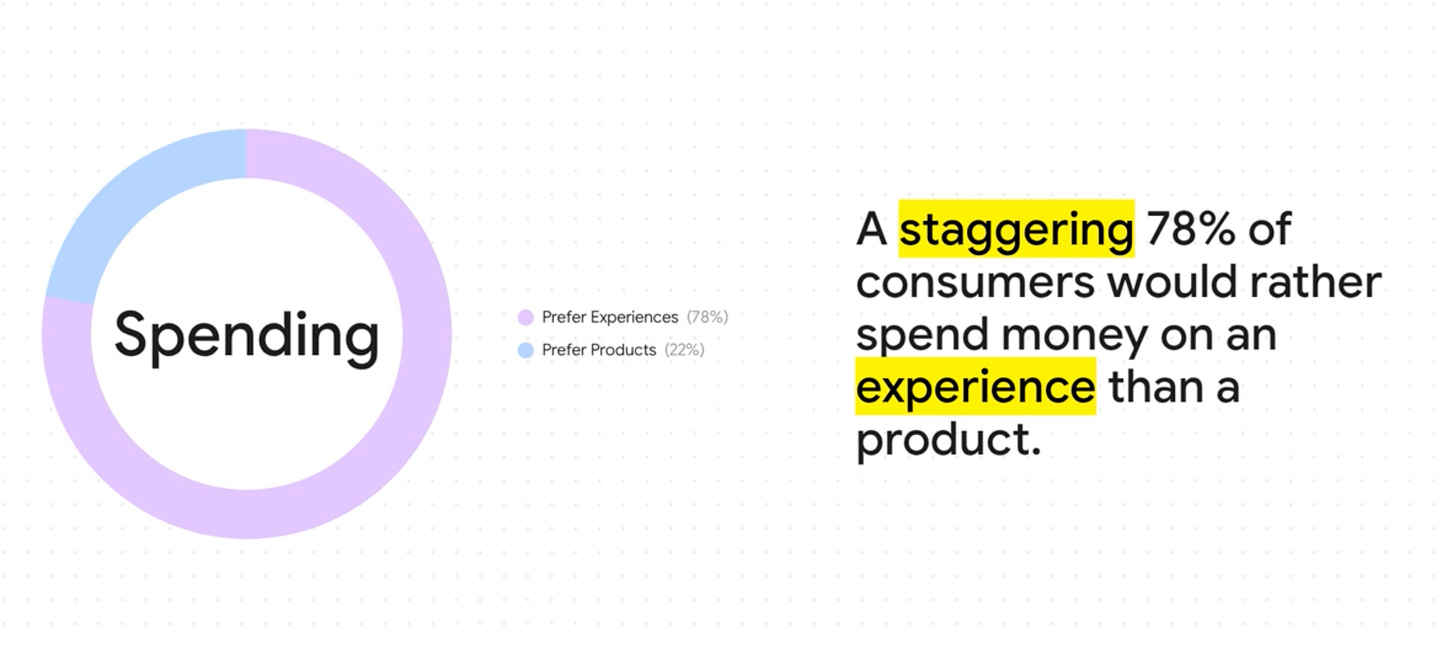How the act of sharing your creativity can sustain you financially
The New Way Artists Are Making Money
In my recent conversation with Pam Smilow1, we discussed how some artists are reimagining the gallery model by turning their own homes into exhibition spaces, offering a new way to share and sell art.
But there’s an even more exciting shift happening: what if the real draw isn’t just the finished artwork, but the creative process itself?
More and more, people are eager to pay not only for a piece of art, but for the chance to step into that world and experience creativity firsthand.
From Collectors to Wannabe Craftsmen
We are increasingly seeing a trend of people wanting to make things with their hands and valuing experience instead of consumption. 78% of millennials prefer spending money on experiences rather than products. And this could be because of a causal relationship between creativity and happiness.
Research shows that creativity is closely linked to subjective well-being, not just fleeting happiness, but long-term life satisfaction. Engaging in creative activity enhances mood, increases resilience, and fosters a sense of purpose.2 Even tiny acts, like trying out a new recipe, a doodle in the margin, or rearranging furniture, can trigger this effect.
They often bring us into flow, a state of complete absorption in an activity where time disappears. Flow is profoundly satisfying, and creative activity is one of the most direct ways to experience it.
This connection suggests an opportunity for artists to design experiences where others participate in making, not just consuming art.
By turning the creative process itself into a shared, accessible experience, artists can promote well-being while building sustainable practices.
From Retail to Experience
As brick-and-mortar retail struggles, artists are stepping into the gap, transforming spaces into hubs of hands-on creativity. The U.S. has 23.5 square feet of retail space per capita, more than any other country in the world3. Much of that space now sits vacant or underused. Instead of seeing it as wasted real estate, artists are turning it into an opportunity: places where people can gather to make, learn, and play.
Instead of buying finished pieces from Etsy or galleries, more people want to engage directly with making, whether through pottery wheels, paintbrushes, or collage kits. Creativity multiplies when it’s shared, and artists are designing new business models around this idea.
Consider Happy Medium, an art studio that launched in a living room in 2019. With landlord support, it grew into an “art bar” that turned profitable within weeks. Similarly, Artishouse in NYC has built a reliable income stream through public workshops, private events, and memberships, earning over $115K in just six months4. These examples show that artists can sustain themselves not only by selling finished works but by hosting and teaching creative practices.
Unlike the perfection-obsessed digital world, these spaces give permission to be a beginner, to play, and to enjoy imperfection.
Parallel trends exist outside the visual arts. Liz’s Book Bar in Brooklyn combines literature with coffee, pastries, wine, and membership perks5. While members receive books and drinks, the deeper draw is community. Across disciplines, clay, paint, or poetry, the formula is the same: real, analog experiences that cultivate connection.
Apprenticeships and Craft Traditions
While art bars and workshops may seem like a new concept, they have deep historical roots. For centuries, artisans have trained others through apprenticeships6. Masters passed on technique and a way of seeing, a body of knowledge that couldn’t be replicated.
Today, many people cannot afford formal art school but are eager to learn a craft, whether for personal fulfillment or as a potential career. Apprenticeship-style learning, formal or informal, revives this tradition while offering artists new ways to sustain themselves.
Each painter, sculptor, or ceramicist carries a unique lens, and by sharing it, they build both community and livelihood.
Reviving Spaces, Reviving Communities
Unused urban spaces, such as empty storefronts, vacant lots, or underutilized studios, offer artists a unique opportunity. By transforming these spaces into creative hubs, artists can host workshops, art bars, and community events that bring people together in ways traditional galleries often cannot.
These activations do more than generate income. They transform forgotten corners of a city into lively, engaging environments that attract visitors, build local networks, and foster cultural participation7.
For example, a vacant retail space can become a pottery studio by day, a painting workshop by evening, and a collaborative community hub on weekends. Each workshop not only teaches skills but also creates a sense of ownership and pride in the neighborhood.

From a business perspective, these spaces allow artists to diversify revenue streams through memberships, ticketed workshops, private events, and even collaborations with local businesses. By opening doors to the public, artists also disseminate knowledge and craft in a way that is tangible and memorable, turning learning into a shared, social experience.
In short, repurposing unused urban space is a win-win: neighborhoods gain cultural vitality and foot traffic, participants gain hands-on creative experience, and artists earn a sustainable livelihood while sharing their unique vision and expertise.
A Validated Trend
Big brands are taking note. Companies like Kerrigold host workshops, such as butter-dish making, that blend creativity with practical use, merging corporate events with experiential retail. Meanwhile, research shows that 78% of millennials prefer spending money on experiences rather than products. Traditional retail is losing ground, while artists who offer discovery, connection, and well-being are thriving.
Full Circle
Ultimately, the rise of art bars is less about invention than rediscovery. For centuries, artisans have shared skills, mentored apprentices, and taught crafts. What has changed is the economic and cultural context: experiences now carry both commercial and societal value.
Art bars, ceramics studios, drawing rooms, and book cafés demonstrate that sustainable art careers don’t have to depend solely on sales or galleries. By teaching, sharing, and creating alongside others, artists can build stable income streams while fulfilling a universal human need: the joy of making.
For readers who want to go deeper, I’ll be sending paid subscribers a more tactical breakdown next week, covering startup costs, workshop pricing models, and real-world revenue examples from artists who have already made this leap.





Yess I'm so here for this! Sincerely, a Gen Z creative :)
I have always had a fascination with the creative process itself. It's what my Substack is about, so I love the ideas shared in this post and how they can be applied.